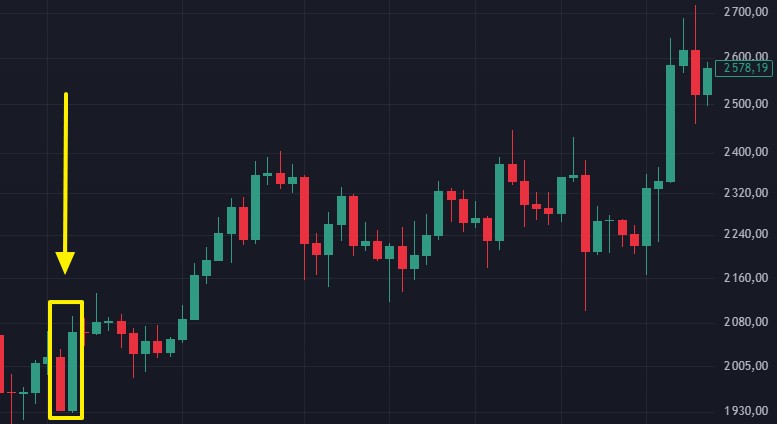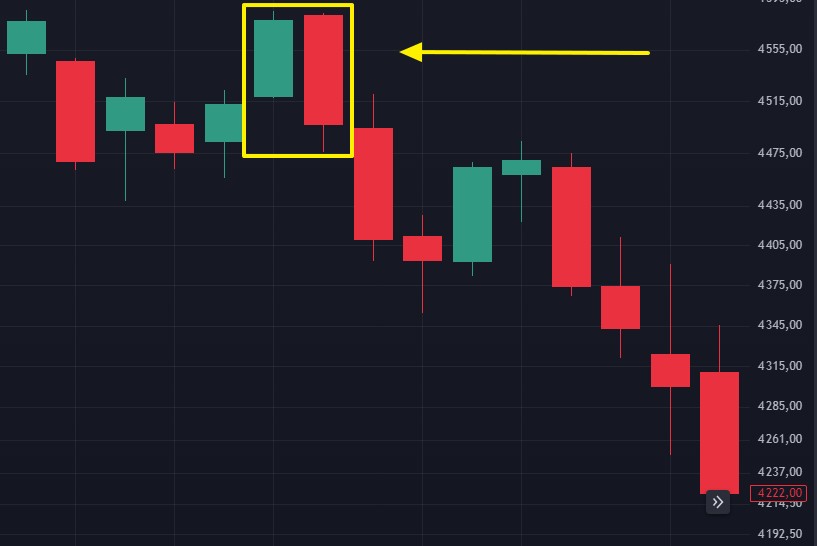How To Make Money With Binary Options?



Editorial Note: While we adhere to strict Editorial Integrity, this post may contain references to products from our partners. Here's an explanation for How We Make Money. None of the data and information on this webpage constitutes investment advice according to our Disclaimer.
How to make money with binary options:
Making profits with binary options might look tricky at first, but it’s actually simple once you know the steps. This guide makes it easy to understand and helps beginners get started the right way.
We skip the confusing terms and make binary options easy to grasp. From picking a trusted broker and choosing assets to using smart strategies and managing risk, you'll find everything you need to start trading.
You'll see how predicting price movements within a set timeframe can bring in good profits if done right. While binary options do come with risk, using these smart strategies will help even beginners start trading with confidence.
Risk warning: Binary options trading is highly risky and may result in a total loss of funds. These speculative instruments often lack strong regulation, with over 80% of traders losing their capital. Invest only what you can afford to lose and seek professional advice.
How to make money with binary options?
Step 1. Learn binary trading basics
To start binary options trading, find a reliable broker and sign up. Before jumping in, practice with a demo account. This lets you trade without real money and get comfortable with how trading works. This step is a must for beginners.
Once you're confident, pick an asset like commodities, currency pairs, or stocks. Look into your asset carefully, follow news updates, and track market trends. Try easy strategies to make better trades, but start with just one to see what works for you.
When you're ready, guess if the price goes up or down within a set time. A correct guess wins your stake plus a 70-85% bonus, but a wrong one loses your stake. Start with small amounts and trade only 1-2% of your capital to keep your losses under control. Binary trading is an easy way to trade if done right, but success comes with preparation and discipline.
Step 2. Consider binary trading opportunities and risks
Since binary trading is an “all or nothing” game, it carries a big risk. The best way to guess right on an asset’s expiration value is by studying market trends, news, and strategies for binary options trading.
Even then, winning isn’t guaranteed, no matter how much research you do. If a trader loses a trade, they lose all the money they risked on it.
But high risk can mean big rewards. Even beginners can make good money with binary options since payouts can go as high as 85% or more, depending on the asset and market conditions.
Step 3. Choose a good broker
Finding a good broker isn’t difficult. We have prepared a list of top binary options brokers for you to make this process easy. All of these brokers have a low minimum deposit and excellent reviews online.
| Demo | Copy trading | Min. deposit | Min. trade size | Min. Payout (%) | Max. Payout (%) | Regulation | TU overall score | Open an account | |
|---|---|---|---|---|---|---|---|---|---|
| Yes | No | 5 | 1 | 17 | 95 | No | 8.7 | Open an account Your capital is at risk. |
|
| Yes | Yes | 100 | 0.01 | 70 | 95 | No | 6.83 | Open an account Your capital is at risk. |
|
| Yes | Yes | 250 | 0.01 | 70 | 95 | No | 5.52 | Open an account Your capital is at risk. |
|
| Yes | No | 250 | 1 | No | 100 | No | 4.12 | Study review | |
| Yes | Yes | 5 | 1 | 50 | 128 | MISA | 9.4 | Open an account Your capital is at risk. |
Why trust us
We at Traders Union have analyzed binary options brokers for over 14 years, evaluating them based on 40+ objective criteria. Our expert team of 50+ professionals regularly updates a Watch List of 25+ brokers, assessing key factors such as payout rates, trade types, deposit and withdrawal conditions, and platform features. We focus on trading conditions and available trading instruments to empower traders to make informed choices. Before selecting a broker, we encourage traders to review its trading conditions, supported assets, and withdrawal policies. Remember that binary options brokers are unregulated in most countries, which carries additional risks. Always conduct independent research and verify terms directly with the broker.
Learn more about our methodology and editorial policies.
Step 4. Research binary trading strategies
Experienced options traders know that a few solid binary trading strategies can lead to big wins and even save traders from tough spots.
If you’re new to trading strategies, skip the pricey trading courses, but don’t trade blindly without learning first. Instead, do your own research and build a strong foundation.
Doing your homework is crucial in binary options trading, and there’s no rush to start trading. It’s best to open a demo account (more on that later) to test out some of the strategies we’ll cover in this guide.
Following the news strategy
Successful news trading involves understanding the information landscape, interpreting market sentiment, and staying ahead of the curve.
Knowing market-moving events is one thing, but spotting their real impact is another. Here are key events and indicators that smart traders use to stay ahead:
NFP revisions matter more than the headline. Pro traders don’t just check the headline — they watch for last month’s changes that can shake up markets. A big revision means the job market wasn’t as weak or strong as first reported, catching traders off guard.
The bond market's reaction to inflation data tells the real story. Forget the headline number — bond moves tell you what traders really think. A drop in bond yields means the market expects the Fed to slow down, while a spike signals fears of aggressive tightening — both of which move stocks and currencies fast.
Central bank meeting minutes reveal the unspoken truth. Tucked inside those minutes are policy fights that hint at the next big move. While everyone listens to central bank speeches, the minutes released weeks later reveal real concerns and divisions that shape future rate changes.
The "wage growth vs. unemployment" relationship is a market trigger. Low unemployment looks good, but if wages aren’t rising, spending could slow down. If wages climb too fast, inflation fears explode, shaking up markets. This wage-unemployment balance helps predict central bank moves before they act.
Geopolitical risk isn’t just about wars — it’s about supply chains. Traders love watching wars and politics, but the real action is in how supply chains break down. Trade tariffs, shipping disruptions, or raw material shortages can trigger price shocks in everything from tech to groceries.
Watch emerging market currency swings before major economic reports. Smart money moves before big US and EU reports, and emerging market currencies spill the secret. If pairs like USD/MXN or USD/ZAR jump before NFP or GDP releases, big institutions may already be positioning for a surprise.
The candlestick pattern strategy
Implement this strategy only after you get a good grasp on how to read asset charts in the market. Candlesticks are quite useful and really show how assets move over time. The underside of the candlestick is its lowest price, and its top is its highest hit price.
By examining the opening and closing costs between these ends, you can start seeing different patterns over time. This will reveal potential movements in the future, which you can then predict and place a call or put option. You’re studying history to establish future choices.
Some of the widely-used patterns are Bullish Engulfing and Bearish Engulfing.


Fundamental analysis strategy
This strategy is well-known among professional traders. This strategy is designed to help you get a better grasp of the nature of an asset. You will simply perform a very in-depth review of everything related to the asset. From there, you will need to place a very low-risk trade to see what will happen. Once the trade hits its expiration date, you’ll be able to see if the asset is profitable or if you should look into something else. If your prediction is wrong, that asset might just be a bit too volatile.
Understanding fundamental factors isn’t just about watching the news — it’s about spotting the events that actually shift prices before the crowd reacts.
Central bank tone shifts. It’s not just rate hikes or cuts; how central banks hint at future moves can move markets before any action happens. The Federal Reserve’s Jackson Hole Symposium or the ECB Forum often drops signals well in advance.
Geopolitical flashpoints. Wars make headlines, but smaller moves like sanctions, trade deals, or military drills near sensitive areas (like the South China Sea) can steer market trends before the news picks up.
Commodity supply disruptions. Most traders check crude oil inventory reports, but real market shocks come from supply chain problems — like OPEC+ production limits or mining bans in key lithium-producing nations, which shake up energy and tech stocks.
Bond yield inversions. When the 10-year yield falls below the 2-year yield, big investors adjust their playbook. It’s more than just a recession warning — it’s a sign that money is shifting, and that ripples into stocks and Forex.
Earnings surprises from market leaders. It’s not just about beating expectations; when companies like Apple or Tesla issue weak forecasts, entire industries can take a hit as investors rethink future growth.
Emerging market currency collapses. When developing nation currencies crash (like the Turkish lira in 2021 or the Argentine peso struggles), it causes global investors to rethink risks, affecting banks and international markets far beyond those economies.
Hypothetical examples of fundamental data in trading decisions:
EUR/USD. You notice the Eurozone's GDP growth is exceeding expectations, while the US Federal Reserve hints at potential interest rate cuts. This fundamental data suggests a strengthening Euro and a weakening US dollar, making a long EUR/USD trade potentially favorable.
Apple (AAPL). Apple announces better-than-expected quarterly earnings and increased iPhone sales. These positive fundamentals indicate strong company performance and potential future growth, making a long AAPL trade potentially profitable.
Gold. Geopolitical tensions rise, and investors seek safe-haven assets. This scenario often leads to increased demand for gold, making a long gold trade potentially advantageous.
Step 5. Test your strategy on demo
Most binary trading platforms and brokers offer demo accounts. A demo account works like a practice run—you get virtual money to trade, so you can learn the ropes without any financial risk. The platform simulates real market movement, letting you test trading strategies without risking money.
A demo account is a great way to try new strategies and get comfortable with trading. On top of that, most platforms offer them for free, so there’s no downside. Starting with a demo account is the smartest move before trading with real money.
Step 6. Follow the rules of risk management
Binary options are extremely high-risk as instruments. You’ll need to stick to the rules, stay away from leveraged funds, start with a small amount of money, and take advantage of the margin.
There are other risk management rules you can implement to ensure that you don’t trade too much money. To start, never risk more than 5% of your total capital. Most professional binary options traders will only risk 1% to 2% of their capital. This rule is very important because binary options trading can have massive returns unlike other investments – which can make traders greedy and way too risky. The possibility for gains is just as high as the possibility for loss, so don’t put your livelihood at stake.
Can binary trading make me rich?
Binary options trading can lead to big wins, but it’s no sure way to get rich. While flipping $100 into $1,000 sounds exciting, making that kind of money means taking big risks — a move even seasoned traders warn against. For most, binary trading is more of a gamble than a wealth-building strategy. Discover a proven binary options strategy with 90% win rate, designed for precision, low risk, and consistent results in short-term trading.
Because binary trading is so risky, it’s not a smart choice for steady income. Winning takes a smart plan, market know-how, and strict risk control. That’s why many traders see it as a side hustle, not a career.
Play it smart — start small and don’t risk more than 5% of what you have. The goal should be steady growth and learning, not going all-in for huge wins that usually end badly. Learn about the features of the Binolla trading platform.
Using failed breakouts and options volume to win in binary trading
New traders often believe binary options is just about guessing price direction, but the real key is knowing why prices shift. Big players manipulate price moves using fake breakouts and market shakeouts to force smaller traders out before the real move. Don’t chase spikes — look for failed breakouts instead. When a price jumps past a key level but quickly reverses, it’s often a trap. The smart move? Wait for a pullback and enter in the opposite direction. This works best during high-liquidity sessions when institutional traders are most active.
A sneaky trick? Watching unusual options activity. A jump in trading at certain price levels often means big traders are hedging positions, signaling an upcoming price shift. Using an options flow tracker lets you spot these moves early. Instead of relying on basic chart patterns or lagging indicators, trade in sync with the big players making the moves.
Summary
Binary options trading involves predicting an asset’s price movement within a set timeframe, offering fixed risks and rewards. If your prediction is correct, you recover your stake plus a 70-85% profit. However, an incorrect prediction results in losing your entire stake. While easy to understand, this trading method is highly risky, and no one should bet a significant portion of their wealth on it.
To trade responsibly, assess your risk tolerance and only use funds you’re comfortable losing. Start by learning the basics, understanding key terminology, and exploring market opportunities and risks. Choose a reputable broker, practice with demo accounts, and experiment with trading strategies. Keep realistic expectations, as binary trading is not a guaranteed path to wealth.
Though it can generate extra income, success in binary trading requires solid market research, strategy, and discipline. With careful planning and proper risk management, you can mitigate losses and trade effectively.
FAQs
Are binary options considered gambling?
While the risks and reward structure resemble gambling, binary options are legally classified as financial instruments rather than games of chance if proper analysis is applied.
Is technical or fundamental analysis better in binary options?
Both have their place. Fundamentals analyze broader forces affecting assets, while technicals spot patterns/trends in asset behavior. Combining them tailors strategies to individual needs.
Do I need prior trading experience to trade binaries?
No, binaries are very simple to understand even for complete beginners. However, studying and practice through a demo account before going live is still highly recommended.
How do I minimize risks in binary options trading?
Use proper money management with no more than 2% of your account on any single trade. Trade with brokers from our recommended list.
Related Articles
Team that worked on the article
Alamin Morshed is a contributor at Traders Union. He specializes in writing articles for businesses that want to improve their Google search rankings to compete with their competition. With expertise in search engine optimization (SEO) and content marketing, he ensures his work is both informative and impactful.
Chinmay Soni is a financial analyst with more than 5 years of experience in working with stocks, Forex, derivatives, and other assets. As a founder of a boutique research firm and an active researcher, he covers various industries and fields, providing insights backed by statistical data. He is also an educator in the field of finance and technology.
As an author for Traders Union, he contributes his deep analytical insights on various topics, taking into account various aspects.
Mirjan Hipolito is a journalist and news editor at Traders Union. She is an expert crypto writer with five years of experience in the financial markets. Her specialties are daily market news, price predictions, and Initial Coin Offerings (ICO).
Cryptocurrency is a type of digital or virtual currency that relies on cryptography for security. Unlike traditional currencies issued by governments (fiat currencies), cryptocurrencies operate on decentralized networks, typically based on blockchain technology.
An investor is an individual, who invests money in an asset with the expectation that its value would appreciate in the future. The asset can be anything, including a bond, debenture, mutual fund, equity, gold, silver, exchange-traded funds (ETFs), and real-estate property.
Yield refers to the earnings or income derived from an investment. It mirrors the returns generated by owning assets such as stocks, bonds, or other financial instruments.
Xetra is a German Stock Exchange trading system that the Frankfurt Stock Exchange operates. Deutsche Börse is the parent company of the Frankfurt Stock Exchange.
Forex trading, short for foreign exchange trading, is the practice of buying and selling currencies in the global foreign exchange market with the aim of profiting from fluctuations in exchange rates. Traders speculate on whether one currency will rise or fall in value relative to another currency and make trading decisions accordingly. However, beware that trading carries risks, and you can lose your whole capital.






























































































































